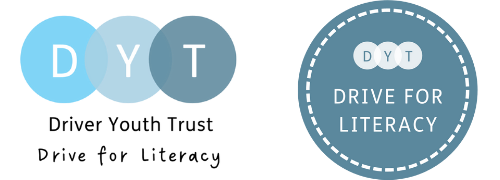DYT’s Literacy Hub: building an inclusive foundation for all learners
24/2/2020
Our long-awaited Literacy Hub is here! Filled with over 50 resources focused on classroom communication, reading and writing, we have everything you need to engage learners with literacy difficulties, SEND, or who you just can’t seem to engage in the classroom.
All of our literacy resources have been expertly created by our Consultant Teacher, Kelly Challis. We caught up with Kelly to find out what inspired her to set up the Literacy Hub, and how she hopes the resources will help teachers and learners across the country.
What inspired you to write the resources?
As a specialist teacher, my inspiration is the learner that finds literacy difficult and how to reignite a passion for learning in them when all they see is a task that’s beyond them. The learners I’ve worked with rarely have a problem with the content of a task, and have a good level of knowledge about it but struggle to read the material, to structure their answers and to then put pen to paper. The Literacy Hub is here to provide scaffolding and support so they can achieve an outcome they’re proud of.
Why did you decide to focus the resources specifically on communication, reading and writing?
I started thinking about the resources from the moment I started working for DYT as a Consultant Teacher. I wanted to develop a set of resources which reflected our key message – that learners with literacy difficulties can really struggle to access the curriculum. It was clear to me that to support literacy development in learners and improve their outcomes, we needed to consider all the different elements of literacy.
It was important that the resources had their foundation in supporting learners with literacy difficulties in the first instance, but that they could be applicable to all learners too. I also wanted them to be adaptable to any Key Stage or subject.
The resources seem to flow on from each other – are the categories matched to rough age groups or learning milestones?
I made sure that each section is in the order of roughly how these skills might develop. The reading resources also reflect when they might feature on the curriculum, with decoding and fluency in Key Stage 1 and comprehension and inference becoming the focus from key stage 2. Communication and writing don’t necessarily reflect the key stages but are in order of how you might develop these skills.
Through our work in schools on the Drive for Literacy programme, we’ve noticed that some learners aren’t secure in these foundation skills and need further support throughout their education. Hopefully, these resources can provide teachers support in identifying what skills a learner may need to develop and continue to do so until those skills are embedded.
Who do you hope will benefit the most from the Literacy Hub?
The resources are for teachers of all key stages, and would support parents home-schooling too. I know, having been a teacher myself, that finding good resources can be a challenge. The Literacy Hub resources have all been tried and tested with learners by our education team, and developed with the theories of what works best for learners with literacy difficulties, cognitive load and working memory model.
Teachers are a creative bunch and I am sure that many of these resources will be adapted and made even better – I would love to see the updates made to them in different schools!
What aspect of literacy or literacy difficulties do you think can be the biggest struggle in the classroom?
Lots of learners aren’t fluent enough in their reading, which means they read slowly and all their effort goes into the mechanics of reading rather than understanding the content. This lack of fluency can lead to frustration and a feeling of being behind their peers. This can have a ripple effect on their work, which can be seen in their accuracy, their word attack skills, their spelling, their understanding of the questions being asked, and the development of their answers.
When should teachers reach for these resources?
Most of the resources are designed to support the delivery of content, rather than a specific task. They all offer scaffolds and access to teaching material except perhaps for a couple, one being the one to one reading record.
I would positively encourage teachers to give the resources a try, but to also note that they’re trying a different approach with a learner. This would reflect the graduated approach of assessing, planning, doing and reviewing. If the learner continues to need more support than the resources can provide, it’s then that further support should be sought from the school’s SENDCo or learning support department.
At DYT, we support the notion that ‘every teacher is a teacher of SEND’ and these resources can help teachers achieve this.
Do you have any favourite resources?
I really like the learner’s desktop planner, which helps keep learners on task and makes it easy for teachers to track how much work is being achieved by different learners.
I also like the different questions to aid comprehension as they show how the information can be seen in different lights and helps to broaden the categories which the learners may be using to store the information and therefore increase the opportunity for connections to be made thus strengthening retention.
Our Literacy Hub is now open! Browse through more than 50 free resources and see how DYT can help you transform reading, writing and communication in your classroom!
